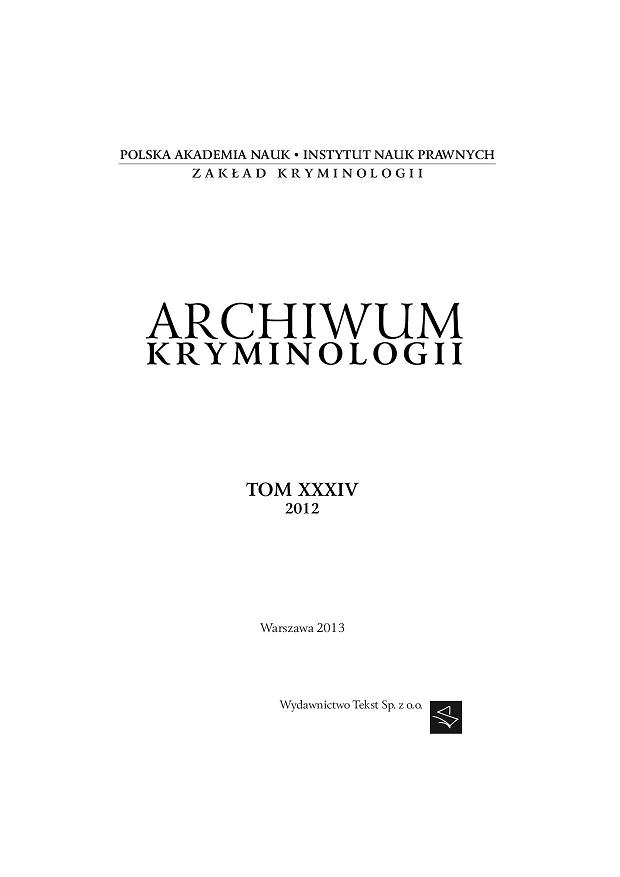Rozmiary i uwarunkowania lęku przed przestępczością
Intensity of fear of crime and its conditioning factors
Author(s): Paweł OstaszewskiSubject(s): Law, Constitution, Jurisprudence
Published by: Instytut Nauk Prawnych PAN
Keywords: FEAR OF CRIME; CRIME VICTIM; VICTIMIZATION;
Summary/Abstract: Criminological analyses of fear of crime conducted to date have lead to formulating many various ways of defining this phenomenon and to concepts explaining its intensity and diversity. This article assumes that the most effective definition (by Sandra Walklate) is that fear of crime is partly rational and partly irrational state of anxiety or fear caused by belief that the individual is at risk of becoming a crime victim. Basic hypotheses regarding factors influencing level of fear concern such aspects as: victimization experiences and objective crime risk level; socio-demographic characteristics of individuals and psychological features which define their sensitivity to dangers and risks, features of environment where an individual lives, and in particular manifestations of social disorganization, size of local population, and presence of social ties, mutual trust, common goals and values among local residents; actions of persecution organs and the justice system and their social perception; macro-social factors (such as quality of social security) as well as media reports and politicians’ actions. Multi-dimensional models of fear of crime constructed by researchers integrate these hypotheses into complex system which offer much more explaining power and possibility of presentation of relations between particular variables in question. The conducted research presented in the article aimed to present the level of crime fear perceived in Poland and other European countries as well as to find social, demographic, and macro-social factors conditioning that fear. The research was based on secondary data analysis from several editions of International Victimisation Studies, Polish Crime Study, and last issue of European Social Survey. Analysis of the crime level in Poland revealed there has been a definite, almost twofold, decrease of percentage of persons declaring such fear during the past 20 years. In the beginning of 21st century, Poles perceived above-European average fear of crime. In 2010 it was lower than in most European countries. As a result of conducted two-dimensional analyses, it was established that crucial factors influencing perceived lack of security contributed to the following hypotheses: victimization, sensitivity to risks, disorganization and urbanization and those focusing on the action of prosecution and macro-social characteristics of inhabited locations. Used techniques of classification tree allowed for initial examination of joint influence of particular independent and dependent variables as well as for separation of many interesting groups of respondents regarding frequency of occurrence of fear of crime. Above-average fear of crime was characteristic of women from middle-sized and big cities who had been victims of crime against property and of men who had been victims of crime against property or as-sault and lived in areas where unemployment was below average.
Journal: Archiwum Kryminologii
- Issue Year: 2012
- Issue No: XXXIV
- Page Range: 157-206
- Page Count: 50
- Language: Polish

